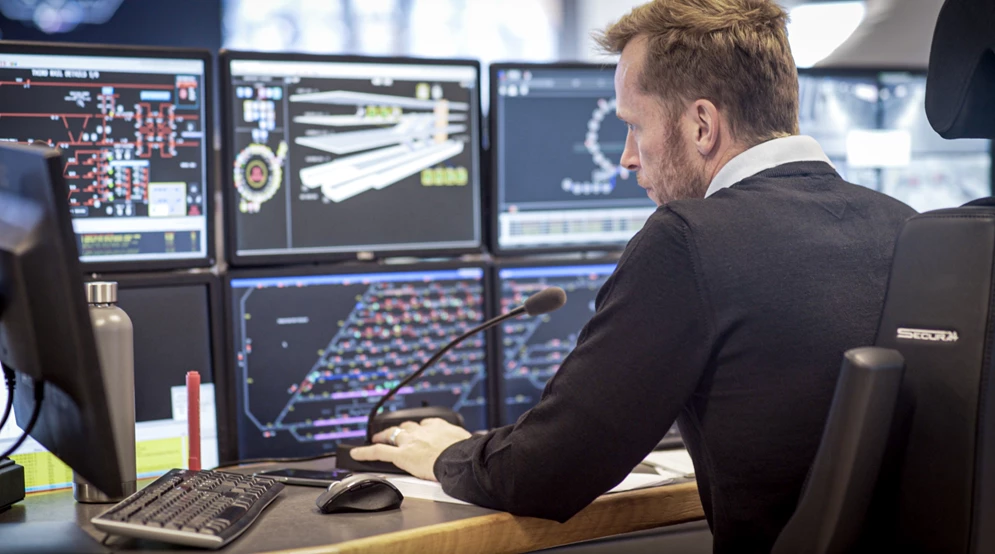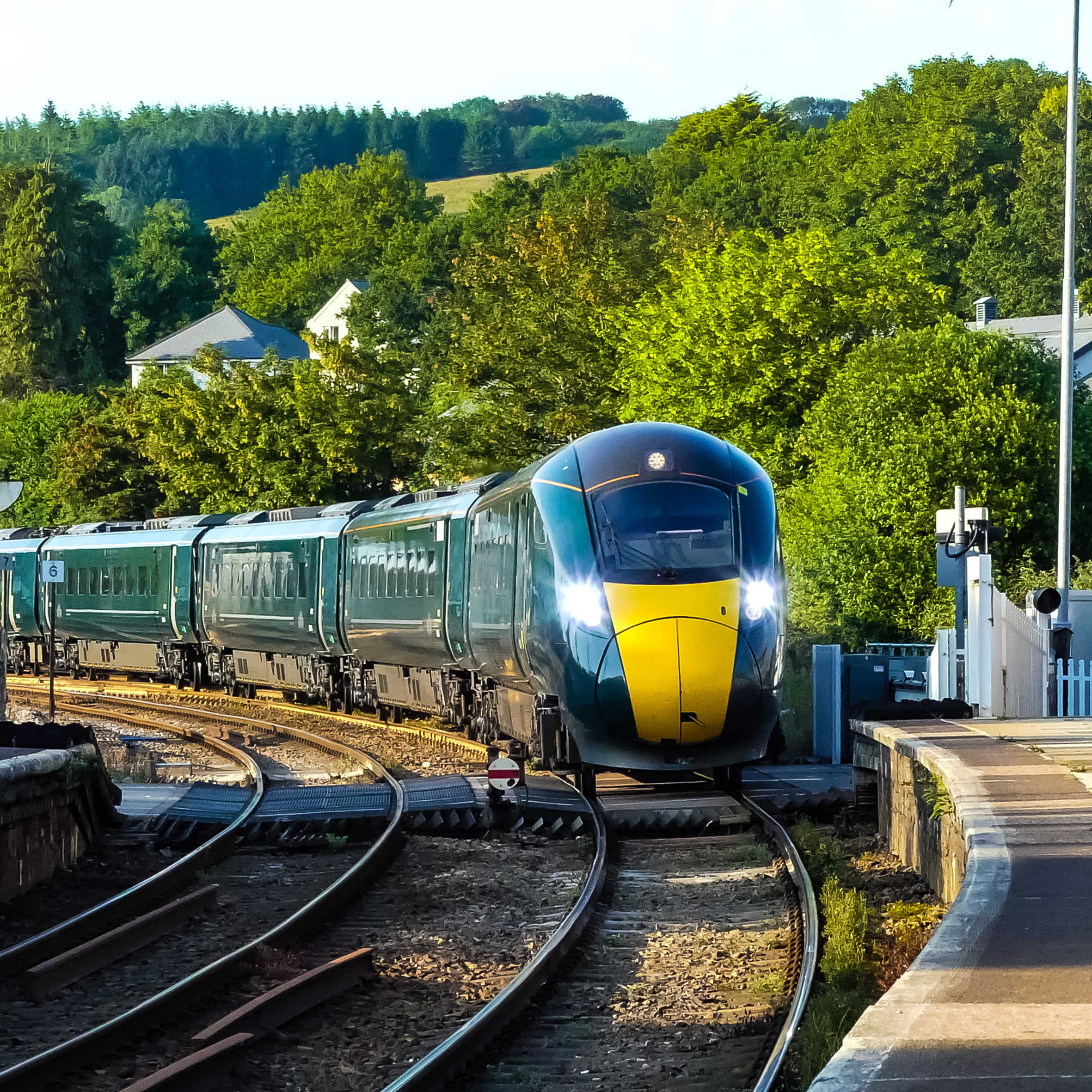By 2030, an estimated 6 billion people will reside in cities, significantly impacting existing infrastructure and resources – and demand for travelling within and between those cities is also expected to increase.
A recent report by Hitachi Rail showed that 78% of people surveyed in 12 global cities expressed a preference for public transport over cars and planes if the public transport system were better connected – and 33% believed that they were more likely to travel by public transport in the future.
But what will support this need for extra capacity?
As new railways are expensive and take a long time to build, rather than constructing new infrastructure, there is a trend toward digitalising railway signalling systems to maximise capacity. The first step starts by replacing traditional ‘traffic light’ signalling systems which require a clear line of sight, and are therefore prone to human error and visual obstruction.
The European Train Control System (ETCS) addresses these challenges, providing a standardised and compatible signalling system for high-speed trains, enhancing safety and efficiency.

What is ETCS and what are the benefits?
ETCS is digital signalling technology which meets the European signalling standard, European Rail Traffic Management System (ERTMS). ETCS is onboard technology which requires minimal external infrastructure. It uses digital signals to communicate the details of a given train’s position, speed, and direction.
With tracks divided into blocks, ETCS keeps trains on separate parts of the track. Data is sent to the trackside which coordinates the movement of all trains and issues ‘Movement Authorities’ on the network, so that the distance between each train is known. As a result, optimum speeds are reached, and trains can engage the brakes with accuracy – creating space for more trains on the network. Information shared includes speed limits, hills, tunnels, and track conditions. This results in a more efficient schedule, with more trains able to run safely on the system.
ETCS also gives trains the capability to travel across continental borders, through changing terrains, infrastructure and administration bodies. Although it was developed in Europe, the technology is increasingly being used worldwide both in passenger and freight railways.
For passengers, the technology makes long-distance journeys more practical, and helps support an alternative to short haul flights, which are proven to be unsustainable. For freight companies, it helps to move more goods more often, increasing both the capacity and the availability of the railway.
The benefits of ETCS for operators go beyond interoperability and increased capacity. Contract lead time is significantly shorter than implementation of more old-fashioned signalling systems and production costs are reduced by the easier process of installation, maintenance, and manufacture. Digital signalling avoids the need for excessive infrastructure which is vulnerable to environmental damage and is expensive to implement.
My career started as an ETCS on-board Signalling Design Engineer in the rail industry in 2014. I was responsible for integrating our products into the vehicle on the Class80x fleets and the Class80x SXR fleets. I have also worked on the generic product development, including Baseline3 MR1 and R2, which have been released as the latest Baseline on the European Union Agency. I transferred from Japan to the UK last April to work on the Class 80x fleets
Yusuke Abe Signalling Engineer
Where is Hitachi Rail’s ETCS offering used?
Digital signalling is a key part of the modern railway. This technology not only improves trains’ speed and efficiency it is also helping to make rail a credible alternative to flying or roadtransport - not only for passengers but for freight.
Hitachi Rail has been at the forefront to develop ETCS standards and technologies for the last two decades. As a result of our work, we have been able to implement our transformative digital signalling around the world. Our team have been developing the implementation of ETCS for 20 years and have been part of working groups with the European Union to meet standards for Europe - and beyond. We developed our onboard ETCS technology in Italy and at our Mito Works factory in Japan.
Hitachi Rail put its first train in service with the ERTMS/ETCS BL2 System in Italy in 2005. From then on, we continued to equip trains around the world with the ERTMS/ETCS System. Fleets in the United Kingdom, including the Class 800’s and fleets across Italy, such as the iconic very high speed ETR1000 and ETR700 trains.
For our latest project in the United Kingdom, we are upgrading the East Coast Mainline route between London and Grantham with ETCS/ERTMS. We are also involved in the upgrade of ERTMS in Italy, with hundreds of onboard units to be delivered in the coming years. This will improve the reliability and, frequency of these railways. The reduction in physical infrastructure also means that the routes will be more sustainable.
In 2017, Hitachi Rail built an Accredited Testing Laboratory for digital signaling. Located in Naples, the laboratory has demonstrated its effectiveness for accurately implementing ETCS according to European standards. The laboratory is an excellent opportunity to collaborate with customers and partners while testing new technologies.
In Australia, we are delivering ETCS technology on the Cross River Rail project, helping to connect the north and south of Brisbane, Queensland. The new track will be 10.3km long and will include two tunnels, to cross Brisbane River. Our trainsets will have ETCS installed, to enable safe service through the tunnels and to increase capacity in a vital part of the network.
In 2022 the onboard ETCS supplied by Mito Works for the Waratah and Sydney Growth Trains fleet obtained Type Approval by Transport for New South Wales. In 2023 the ETCS on-board supplied by Hitachi Rail it went into service in New South Wales, Australia operating in ETCS Level 1.
ETCS technology has also been deployed in Western Australia on the Rio Tinto iron ore project, a 2.4km long driverless freight train which covers a 1700km long network of track from mine to port.
I’ve been working for Hitachi for over 20 years, managing different signalling system technologies firstly within the RAMS team and then in Engineering and Development teams. I have been responsible for the on-board technology since January 2019, directing many projects globally and collaborating with the different Centres of Competence in Europe, US and Japan
Cosimo Affuso Senior Director On-Board Signalling Technology
Want to learn more about Hitachi Rail innovation and current project updates? Visit our blog for team insights and behind-the-scenes updates.



